Plastic is omnipresent in our daily lives: in the fibers of our clothing, on the shelves of our bathroom and in many containers and utensils in the kitchen.
As practical as this material is, it is not the safest material to use in making our kitchen items, as wear and tear risks introducing harmful microplastics into our food. A recent study even found that there are more microplastics in the human brain than ever before, with higher levels in people with dementia.
Switching to non-toxic household staples will reduce your risk of exposure and ingestion and benefit your long-term health. Here are six simple switches that our experts say will make an instant difference in your kitchen.
1. Glass or stainless steel food containers
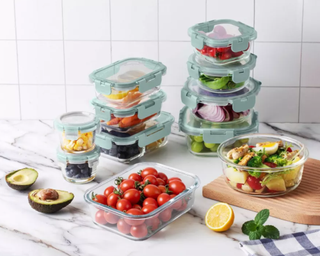
(Image credit: Target)
Plastic food storage can be found in many people's kitchens because it is versatile and practical.
However, plastic food containers are one of the main culprits of the problem of microplastic ingestion as they are subject to high wear and tear and are therefore prone to chips and scratches.
The new study, published in Nature Medicine, found increased levels of micro- and nanoplastics in the human body, particularly in the brain, kidneys and liver. The extent of the damage it can cause is unclear, but some studies have linked it to inflammation and heart health risks .
Karina Toner , operations manager and professional cleaner at Spekless , says: "Plastic food containers can break down over time, especially when exposed to heat, releasing microplastics into the food. This pollution can build up in the body and is associated with health risks.
Glass and steel kitchen storage ideas are a great substitute because they are sturdy and non-porous and do not leach chemicals into your food. Karina recommends the Glasslock 6-Piece Oven-Safe Rectangular Container Set from Amazon , which includes containers in a variety of sizes, as well as the Irishom Large-Capacity Stainless Steel Leak-Proof Kitchen Storage Container , also from Amazon.
2. Beeswax wrap or silicone lid
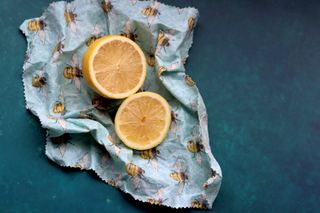
(Image credit: Maya Shustov via Getty Images)
Cling film or "cellophane" is a useful accessory in the kitchen that you can use to securely seal leftovers and keep them fresh for longer. But it's actually one of the surprisingly toxic elements in your home . Adding a layer of plastic to food encourages the penetration of microplastics, especially if the food you are packing is still slightly warm.
"Plastic wrap is single-use and has a tendency to break down, especially when used to cover hot foods, introducing particles into the meals," says Karina.
Using beeswax wraps or silicone lids instead of plastic wrap is an easy way to make your home less toxic . It also protects the environment, your health and your wallet.
"Both are great options because the beeswax wraps are biodegradable and provide a natural seal, and the silicone lids are stretchy, reusable and safe for high temperatures," adds Karina.
This reusable beeswax cling film roll from Bee's Wrap on Amazon is plastic-free and can be cut to the desired size. However , Amazon's Basichaus Reusable Silicone Stretch Lids are the perfect option for covering bowls and pans.
Punteha van Terheyden, director of Solved, switched to silicone lids after becoming a mother in 2016. She says: "I was arrogant to a certain extent when it came to my own health, but when it came to my daughter I couldn't take any chances. I chose reusable silicone lids available at Walmart and found them very convenient since they didn't have to fit exactly to pots, pans, or containers to ensure a good seal. They are easy to wash and last a long time.
3. Natural cleaning tools
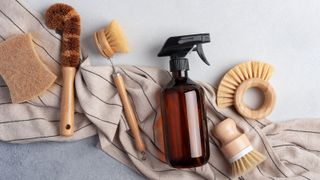
(Image credit: Getty Images)
You may not know it, but sponges and dish brushes probably contain plastic too. The more you scrub with these devices, the more likely they are to break down microplastics in your dishwater and on your dishes.
Muffetta Krueger, founder of Muffetta's Housekeeping , says: "Cleaning tools made from synthetic materials often break and leave behind microplastics. Constant scrubbing while cleaning causes them to decompose and release their microplastics into the water in the dishes and onto surfaces like our dishes.
Switching to cleaning utensils made from natural materials like bamboo and other biodegradable materials will prevent microplastics from dissolving on your dishes and being swallowed the next time you serve them.
"Bamboo brushes and cellulose sponges are naturally biodegradable without the loss of microplastics. As a cleaning tip, I would therefore recommend them as good alternatives to other products," says Muffetta. "They clean effectively while being safer for the environment and your kitchen. »
Walmart offers a range of eco-friendly cleaning tools that will last a long time in your kitchen, including the 12-pack of Six-Wipe Natural Cellulose and Coconut Fiber Kitchen Sponges and the ITTAHO 12-pack of Wood Pulp Kitchen Cleaning Sponges .
4. Stainless steel, cast iron or ceramic coated cookware.
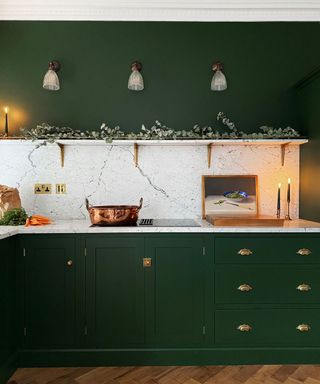
The strength of our non-stick pots and pans , which allow minimal food residue to accumulate, lies in a special non-stick coating that wears away over time with wear and tear. As this layer wears away, the scales can end up on our food during cooking, which is unlikely to be noticeable once eaten.
When it's time to replace your pots and pans , choose durable, non-toxic cookware like stainless steel, cast iron, and ceramic-coated pieces that will continue to provide you with a high-quality cooking experience without the risk of microplastics leaching into your family's food.
"These three materials do not release harmful chemicals or microplastics like nonstick items would, especially when scratched or exposed to high temperatures," says Muffetta. "Pro tip: You can season cast iron pans to create a natural non-stick effect."
Target's 12-Inch Nonstick Ceramic Coated Aluminum Skillet with Lid - Figmint™ is popular and available in a variety of colors to match your kitchen's aesthetic. Stainless steel and cast iron cookware is available at many stores, but I like the Cuisinart, Chef's Classic Collection 11-Piece 77-11G Stainless Steel Cookware Set from Amazon because it includes all the essentials.
5. Kitchen utensils made of wood, stainless steel or food grade silicone.
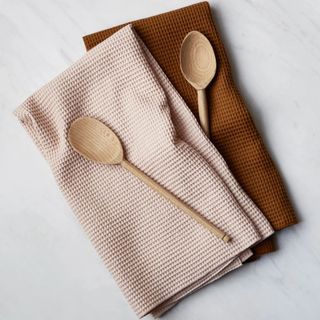
(Image credit: Lulu and Georgia)
The same goes for black plastic cookware , such as: B. Non-stick pots and pans: Parts of your utensils can become loose due to frequent use, when cleaning cookware or because the utensils often come into contact with high temperatures.
As Forrest Webber of Bear Brothers Cleaning says, "Plastic utensils are like the thin paper napkins of the utensil world. They can break, crack and slowly release microplastics into food. With these tools, it's like the plastic is trying to get into your food when you're not looking.
Replacing your plastic utensils with wood, stainless steel, or food-grade silicone is a quick change, but your future self will thank you for it.
The U-Taste 4-Piece Heat Resistant Silicone Spatula on Amazon is a vibrant set that can withstand temperatures up to 600° Fahrenheit. The offer also includes a plain black set if you prefer something more minimalist.
Whether you're starting a kitchen from scratch or replacing your supplies entirely, Amazon's Home Hero 54-Piece Stainless Steel Cookware Set has everything you need and more, including eliminating the risk of microplastics in your utensils.
Solved manager Punteha added: "I was horrified when I looked into my frying pan while cooking the other day and saw the tip of my black plastic cutlery breaking off into fragments visible to the naked eye. I immediately gave up on mine and replaced it with a natural wood set. I recently replaced my plastic cutting board with a non-toxic one for the same reason.
6. Metal, bamboo or glass straws
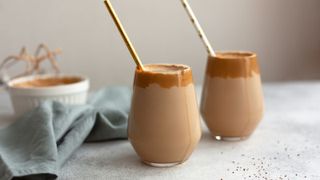
(Image credit: GettyImages)
Did you know that every time you drink a drink through a straw, you can drink small pieces of plastic? It's easy to believe that plastic straws pose few health risks because they are designed for single use and are typically new before being thrown away. But in reality, this is not the case and they can still cause harm.
"Plastic straws are the little rebels of the plastic world: they decompose, contaminate and can introduce microplastics into drinks," says Forrest. "Using bamboo or metal straws is an ideal alternative as they do not break down or release chemicals, are reusable and easy to clean."
Glass straws are also a good option, although they are much more fragile.
This 20-pack of reusable stainless steel metal straws from Amazon has over 11,000 positive reviews. Each straw also comes with a silicone lid to protect your drink when you're not drinking it. However, if you prefer to use clear glass straws to ensure the inside is completely clean, this 10-pack of reusable glass straws from Amazon is ideal.
Don't forget to get a straw brush to clean the inside of your straws, like the ALINK Bottle Brush Cleaner 5-Pack from Amazon , which is made from all-natural materials.
The kitchen is a good place to start when it comes to reducing plastic, but don't overlook the toxic plastic storage items hiding in your bathroom that you could take advantage of by turning them off, as well as the secretly toxic items in your bedroom that you need to say goodbye to.
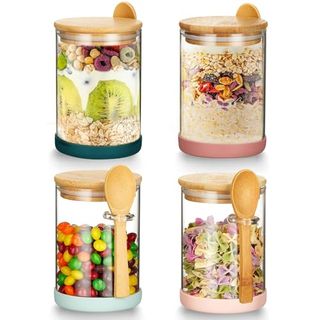
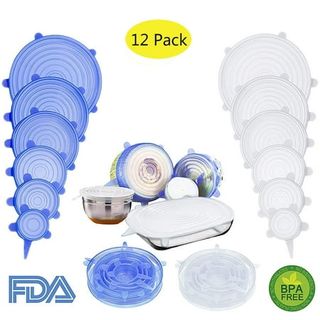
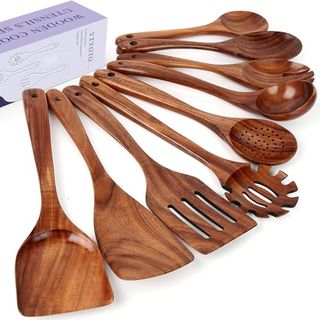
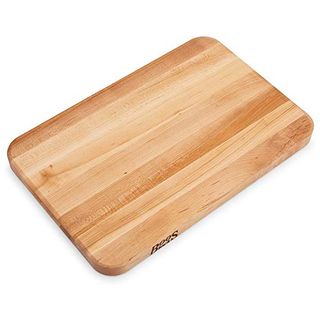
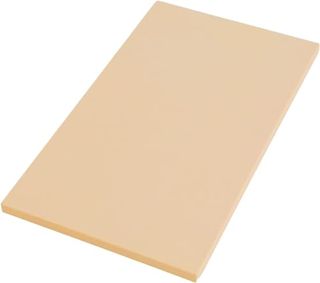
Aucun commentaire:
Enregistrer un commentaire